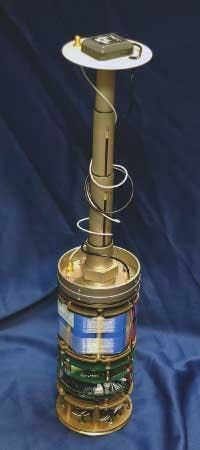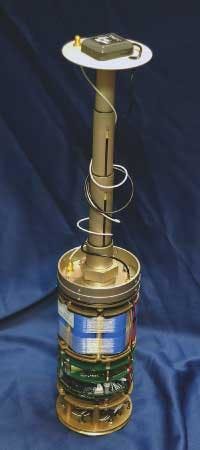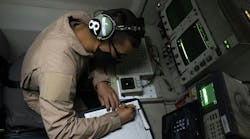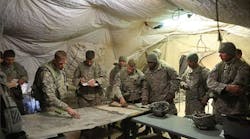By Ben Ames
ARLINGTON, Va. — Before they dropped a single bomb on Baghdad, American military commanders first sent covert forces to tap Iraqi fiber-optic cables for eavesdropping. Then they ordered EA-6B Prowler electronic warfare jets in to jam defensive radar.
In modern warfare, electronic-warfare measures always will precede foot soldiers into battle. But pilots and special operations forces risk their lives in such missions.
Yet systems designers at BAE Systems say they have a better way to get the job done. The BAE Wolfpack program consists of clusters of small ground sensors that detect and jam enemy radar and communications, while protecting friendly signals.
Most important, BAE officials say military forces can place the Wolfpack units by dropping them from aircraft or even shooting them from artillery.
Leaders from the U.S. Department of Defense (DOD) say they like the idea, too. On March 25, the U.S. Defense Advanced Research Projects Agency (DARPA) in Arlington, Va., authorized a two-year, $22.8 million grant to BAE's Information and Electronic Warfare Systems (IEWS) division in Nashua, N.H., to continue developing the system.
Each sensor is a camouflaged cylindrical unit nearly five inches in diameter and 8 to 10 inches tall (plus an antenna); it looks something like a paper towel roll. As a unit lands on the ground, it extends its mechanical legs and raises its antenna.
But the units are not merely expensive confetti. Once dropped, individual "wolves" (sensors) activate themselves, and then organize into a "pack" of about a dozen nodes, says Will Shores, director of business development for the advanced systems and technologies division of IEWS. The pack even elects a "leader" to act as a communications gateway.
"Then they listen to the environment. It's classic electronic surveillance," Shores says.
The pack sorts out enemy signals from friendly ones, and then picks the best signal detection and jamming strategy for its mission. And finally the leader reports back to U.S. soldiers. Depending on the results, operators can even change the pack's mission.
That communication will happen through BAE's Signal Intelligence Diamond Software Architecture, which is interoperable with DOD's Adaptive Joint C4ISR (command, control, communications and computer, intelligence and reconnaissance) program.
null
This does not spell the end of signal-jamming aircraft, says Shores, who has served as an electronic countermeasures officer on Prowler flights. The Wolfpack will augment, not replace, the EA-6B aircraft.
BAE leaders say they expect to test prototypes in the field within two years. But there are challenges to solve before then.
Physics dictates that radio waves will reach the farthest when they start on the highest point. That is why radio and cell phone towers are on skyscrapers and mountaintops. So how can these little units achieve anything from the ground?
"It's stand-in jamming instead of stand-off jamming," Shores explains. "They're so close to the threat that they don't have to reach very far."
Since they operate remotely, battery power will be one of the toughest design challenges, he admits. "Managing power is at the heart of the system. We have to be very clever in deciding when to listen, when to jam, and when to go into sleep mode."
BAE IEWS is working with partners including: BAE's Integrated Defense Solutions in Austin, Texas; M/A-COM in Lowell, Mass.; Herrick Technology Laboratories in Bedford, N.H.; Telcordia Technologies in Morristown, N.J.; and ILC Dover Inc. of Frederica, Del.




